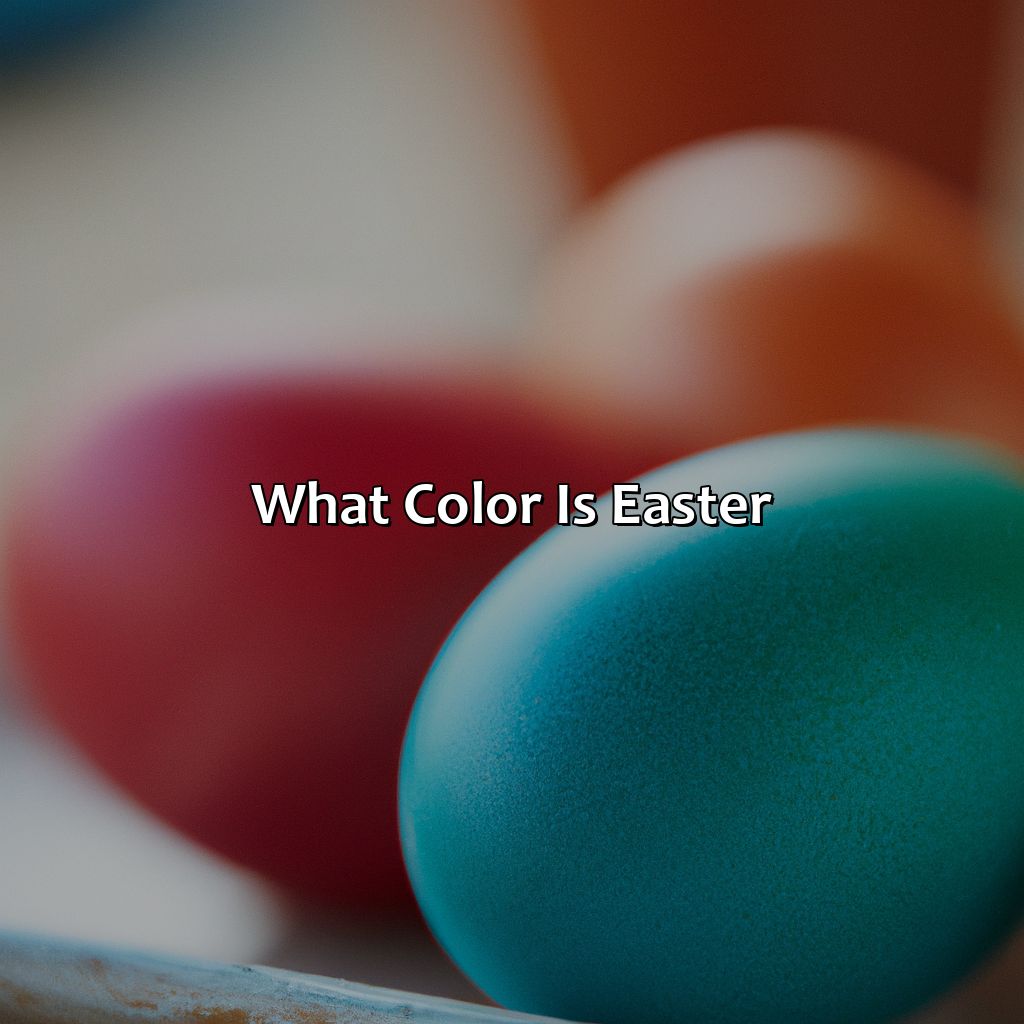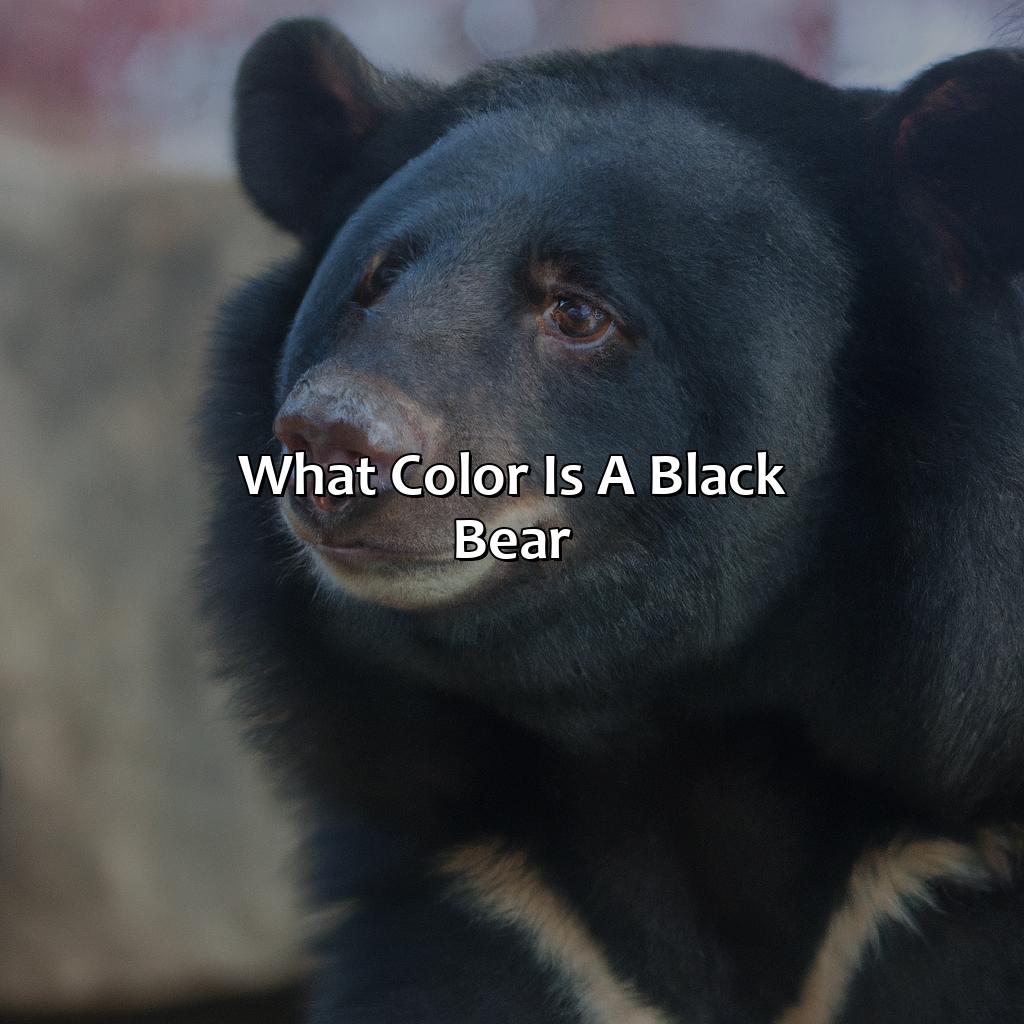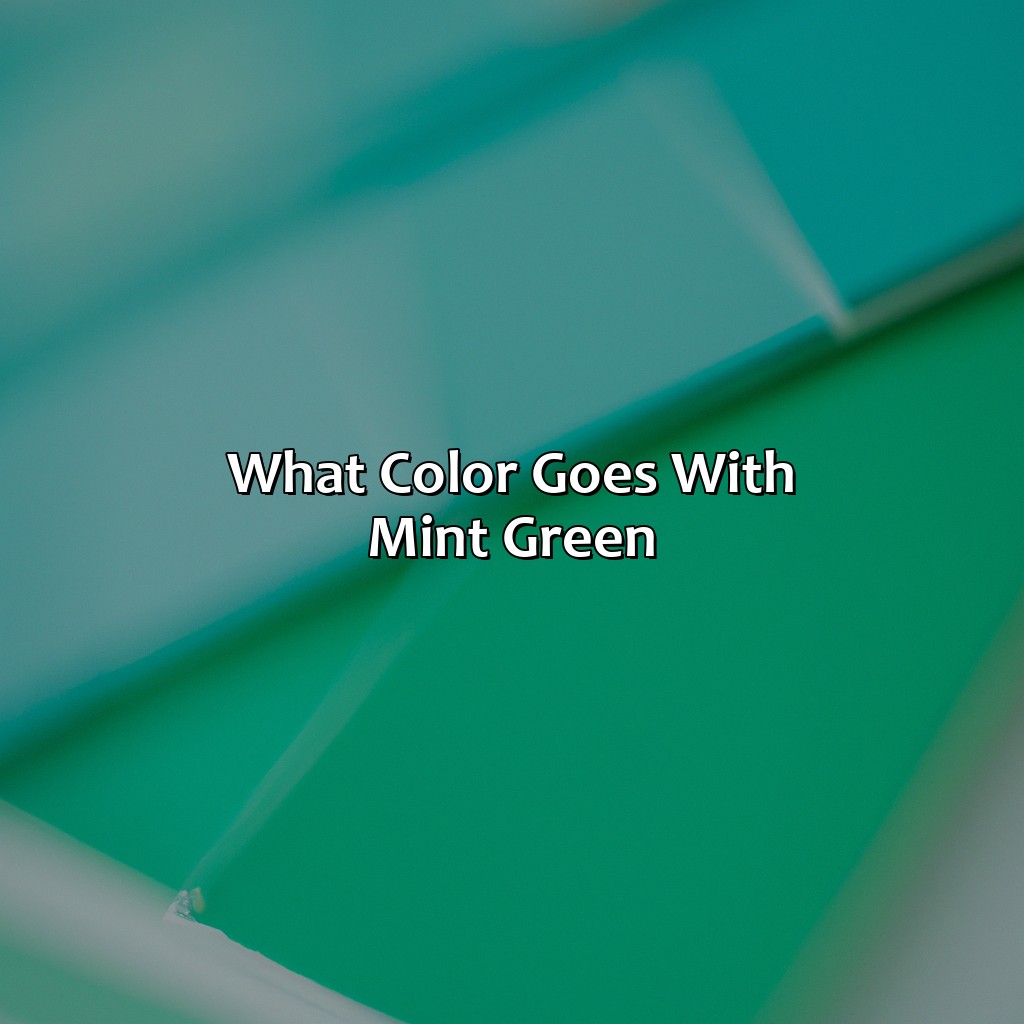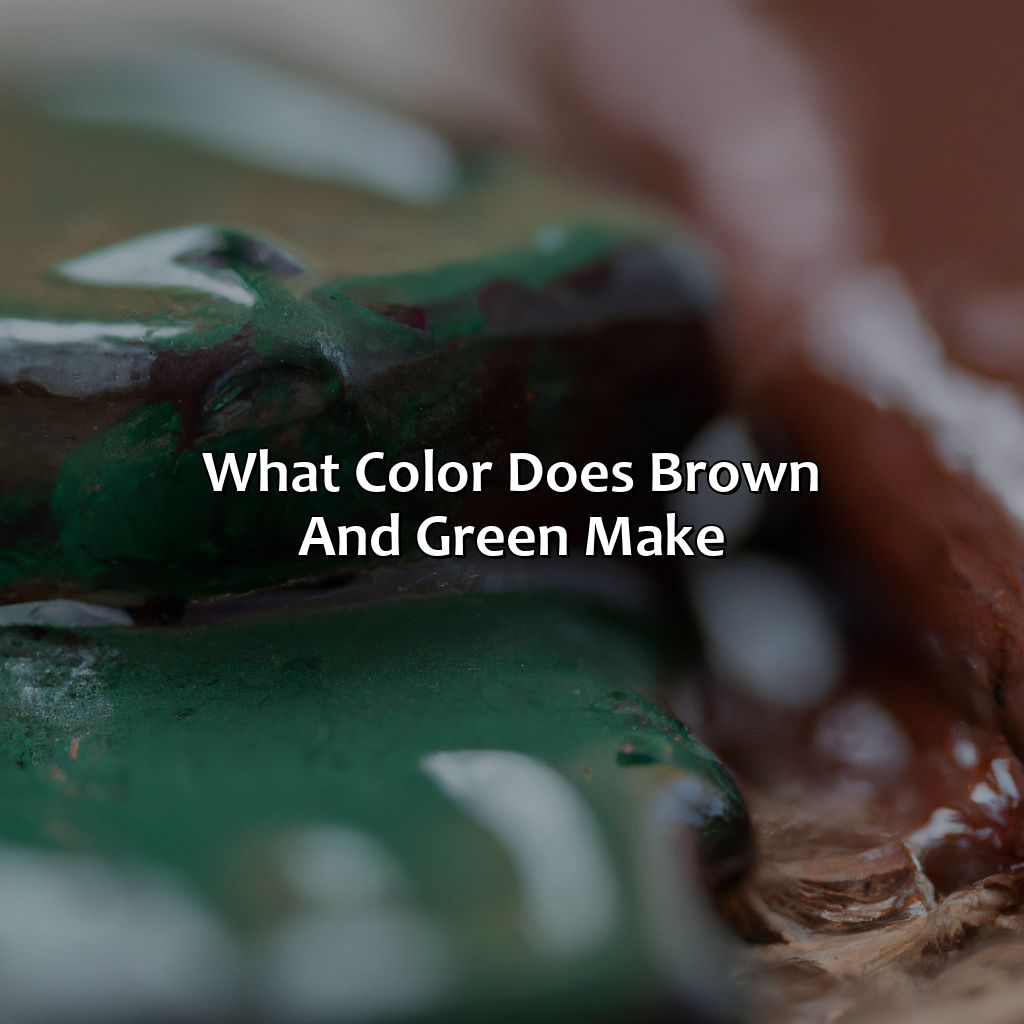Key Takeaway:
- Easter colors have a deep historical and religious symbolism that goes back centuries. The colors are representative of various religious and spiritual beliefs, and have also evolved to reflect modern traditions and fashion trends.
- Purple is symbolic of Lenten penitence and mourning, while white represents resurrection and purity. Red signifies Christ’s blood and passion, while green is representative of new life and hope. Pastel colors such as pink, yellow, blue, and orange are used for Easter decorations and fashion, and represent renewal, happiness, tranquility, and enthusiasm respectively.
- Easter color celebrations and traditions vary across different cultures, with each color holding unique meanings and importance. Creative ways to incorporate Easter colors in celebrations include Easter outfits, crafts, and decorations such as Easter wreaths and candles.
The Meaning and Symbolism of Easter Colors
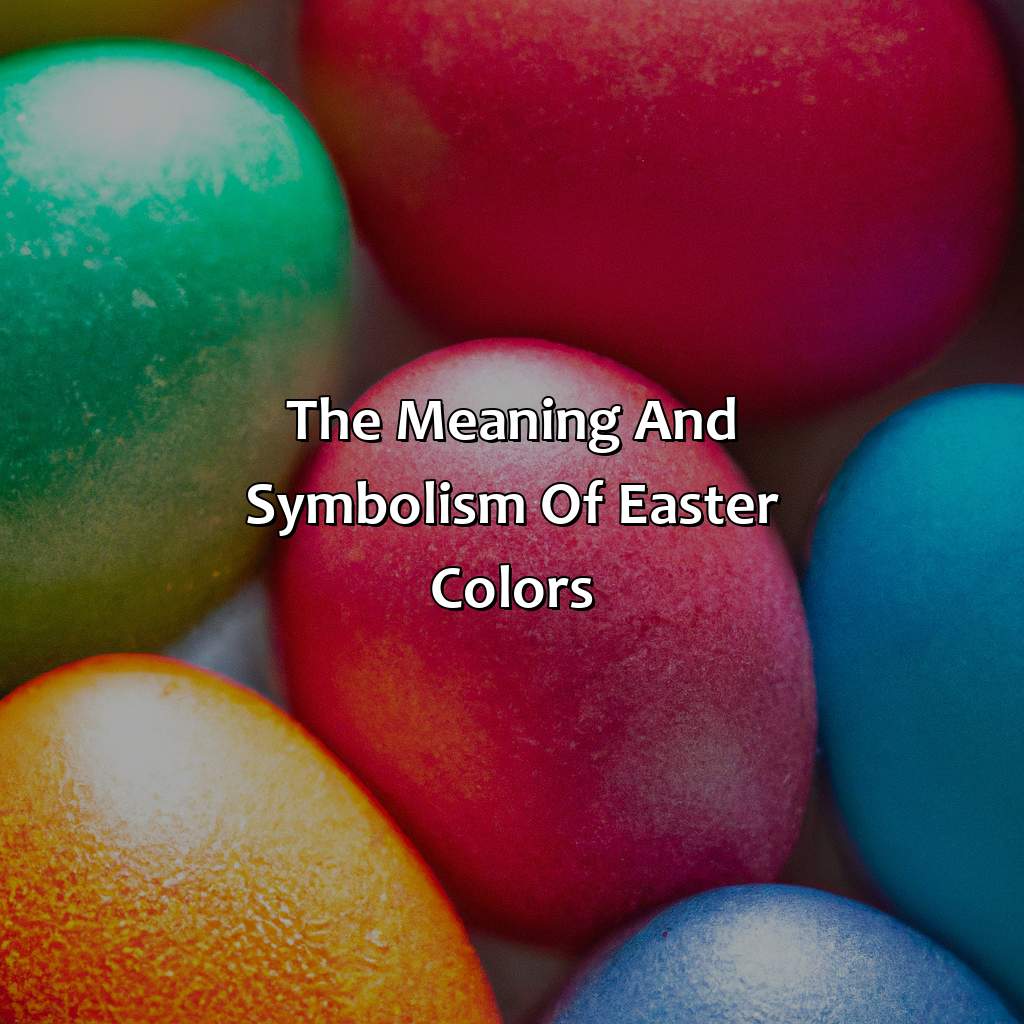
Photo Credits: colorscombo.com by Terry Thomas
Grasp Easter colors’ meaning and symbolism by exploring their history and religious importance. Delving into the past, from the pagan festival of Eostre to the Christian resurrection celebration, illuminates the significance of spring colors and religious symbolism.
Further, discover the significance of Easter colors in Christianity. Learn about interpretations and customs, such as the white Easter lily and yellow Easter egg.
Understanding the History Behind Easter Colors
Easter has a rich history that is filled with symbolism and meaning. Its origins can be traced back to pre-Christian times, when the pagan festival of Eostre was celebrated during the spring equinox. As Christianity spread throughout Europe, the Easter holiday was merged with existing traditions to create what we now know as Christian Easter.
During Holy Week, which includes Good Friday and extends through Easter Sunday, Christians observe the crucifixion and resurrection of Jesus Christ. The forty-day period leading up to Easter Sunday is known as Lent and is marked by penitence, prayer, and fasting. This lenticular period is traditionally associated with the color purple.
Traditional Easter colors also hold significant meaning within Christianity. For example, white represents the purity and resurrection of Christ, while red symbolizes His blood and passion. Green signifies new life and hope. In modern times, additional colors like pink (renewal), yellow (happiness), blue (tranquility), and orange (enthusiasm) have been integrated into celebrations.
Unique cultural variations have emerged around the world when it comes to Easter colors. For instance, in Greece, eggs are dyed red to signify the blood of Christ or blue for Mary’s mantle; whereas in Sweden, feathers are used to decorate trees instead of eggs.
To incorporate traditional and modern Easter colors into your celebrations this season, try dyeing eggs or creating festive DIY decorations such as floral centerpieces or hanging egg ornaments.
Pro Tip: Consider incorporating traditionally significant flowers like lilies or irises into your décor for an added layer of symbolic depth this Easter season!
Why settle for just chocolate when you can have the symbolism of religious Easter colors to go along with it?
Significance of Easter Colors in Christianity
Colors play a crucial role in religious Easter traditions in Christianity. They are symbolic and carry spiritual significance. The colors used during Easter Sunday, the resurrection of Jesus Christ, hold deep meaning that resonates with Christians globally.
Traditional and modern Easter colors have significant importance in Christianity. Purple represents Lenten penitence and mourning, and white signifies the resurrection of Christ and purity. Red stands for Christ’s blood and passion, while green symbolizes new life and hope. Pink signifies renewal and joy, yellow means happiness and cheerfulness, blue represents tranquility and serenity, while orange conveys enthusiasm and energy.
Unique cultural variations exist worldwide regarding the meaning behind Easter colors. For instance, the use of easter lamb is particularly significant in many regions worldwide as it symbolizes Christ’s sacrifice on the cross.
The white easter lily symbolizes virginity or purity of Mary in some Christian traditions around Easter Sunday. Additionally, flowers like daffodils evoke a sense of rebirth that comes with new beginnings.
Easter music also plays an essential role in Christian traditions to convey the message of hope that comes with Easter sundry experiences.
To celebrate Easter, people decorate their homes with colorful lights; this creates an ambiance full of love as it reflects the beauty of religious diversity that Christianity celebrates.
Why be blue when you can embrace the penitence and mourning of the Lenten season with a regal shade of purple?
Traditional Easter Colors and their Meanings
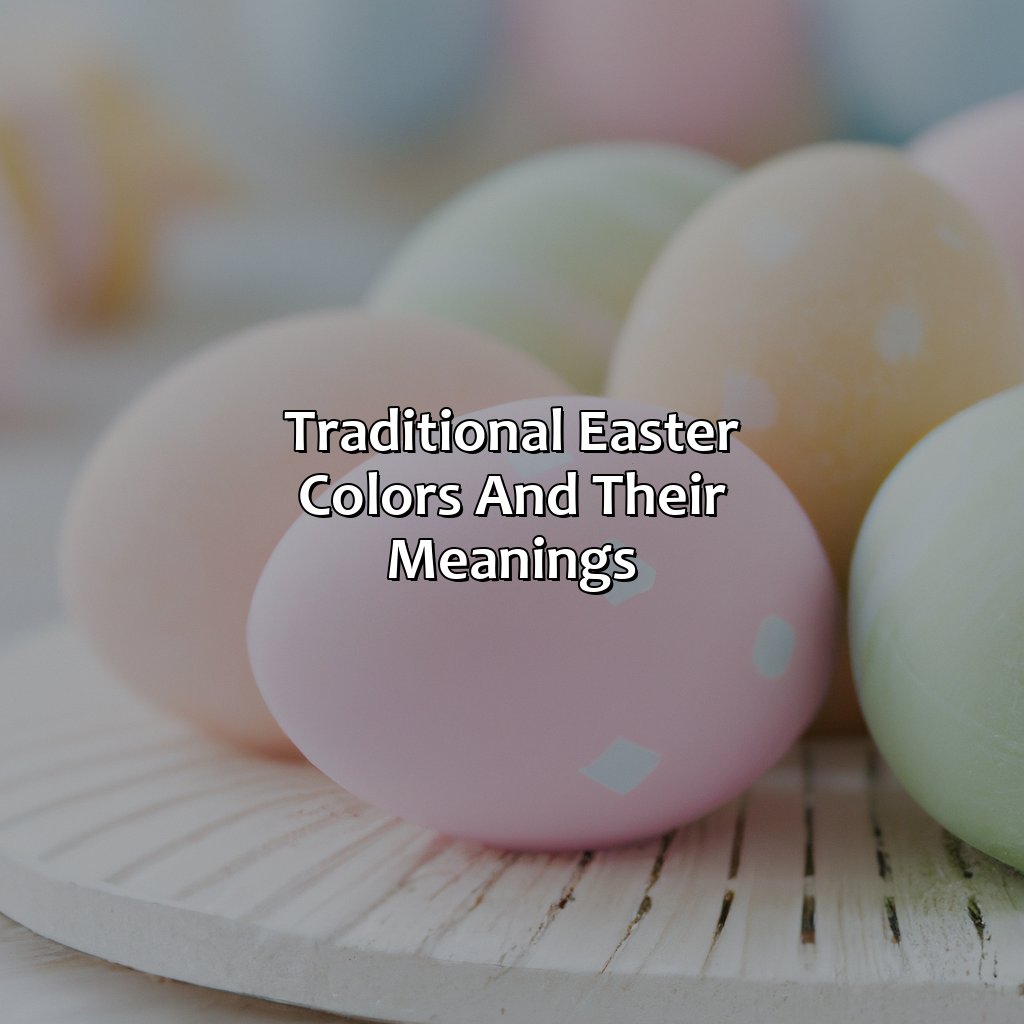
Photo Credits: colorscombo.com by Noah King
To get a concept of Easter colors and their symbolism, explore the subsection on Traditional Easter Colors and their Meanings. These include Purple, White, Red and Green. Every color symbolizes something else relating to Easter customs. For instance, Lenten penitence, resurrection and holiness, the blood of Christ and His passion, and new life and expectation.
Purple: Lenten Penitence and Mourning
Purple, an essential color of Lenten season, is known for representing penitence and mourning in Christianity. It signifies the believer’s reflection on their transgressions and the sacrifice that Christ made for humanity. The luxurious nature of purple served as a reminder to laity about the importance of humility and austerity during Lent. Moreover, it symbolizes the suffering of Christ on the cross and his death for mankind’s sins.
During Lent, many churches decorate their altars with purple Paraments, which represent royalty, leading up to Jesus Christ’s crucifixion and ultimate resurrection. These adornments range from hangings or veils to candles and flowers – all embodying spirituality during this period.
Furthermore, purple has various other historical meanings across many cultures. In Roman times emperor’s wore garments dyed with Tyrian purple; in Japan hibiscus tea is brewed with purple flower petals to celebrate spring, while it also stands for courage in China.
Pro Tip: To add meaningful significance to your Easter celebrations incorporate Purple tablecloths or napkins in your table settings as a subtle nod towards Christianity’s ideologies.
White is not just for weddings, it’s also for the resurrection and purity of Easter. Who knew?
White: Resurrection and Purity
The color white holds significant importance in Easter celebrations, particularly in Christianity. It symbolizes both purity and resurrection. During the Easter season, Christians believe that Jesus Christ rose from the dead and conquered death itself. The color white represents this new beginning and the purity that comes from redemption. Furthermore, the color represents light, faith, goodness, heaven and love.
White is commonly used in Easter decorations such as ornaments or altar cloths. It covers traditional symbols such as lilies which represent hope and rebirth. Many churches switch to white robes for clergy members during the Easter season to symbolize this purity of rebirth after Christ’s resurrection.
Considered as the most “light-filled” color among all colors; it hence reminds us of a new life full of endless possibilities and hope for a better future. Therefore, white plays an essential role in Easter celebrations worldwide.
Pro Tip: White can be combined with pastel colors like green or pink to represent new beginnings or with more vibrant colors like gold or blue to represent grandeur, opulence and serenity respectively.
Why settle for a bouquet of flowers when you can decorate with Christ’s blood and passion?
Red: Christ’s Blood and Passion
Red is a significant color traditionally associated with Easter, representing Christ’s Blood and Passion. Symbolically, it signifies the sacrifice Jesus made for humanity, which resulted in the forgiveness of all sins. The red color also symbolizes the new life that Jesus’ resurrection provides to those who believe in him. Red is a powerful color that conveys deep spiritual and emotional meanings, reflecting the intense love that God has for his people.
The Passion of Christ refers to his suffering and death on the cross to redeem mankind’s sins. The color red represents this immense pain and agony that Jesus endured during his crucifixion, transmuting himself into luminous energy upon death. Throughout Lenten season leading up to Easter Sunday, churches use crimson fabric as a symbol of repentance towards sinners while signifying rebirth through Christ’s resurrection.
In Christian iconography, paintings depict Jesus wearing a scarlet robe bearing bloodstains from his wounds on the cross. This portrays how sacrificial he was of himself for people’s salvation while serving as an inspiration for believers to follow in their faith journeys.
Interestingly enough, some cultures tend to integrate orange onto their Easter celebrations rather than Red- Mediterranean countries such as Italy; where eggs are painted using various shades of Orange symbolizing sunshine or brightness rather than using vivid red colors commonly seen around other parts of Europe or South America.
According to historians researching Byzantine Empire texts, Gregory of Nyssa often used red dye as a symbol for Christ’s love for humanity due its ability to not fade over time, unlike other dyes used during his time period.”
Green brings new life and hope to Easter, just like those plants you promised to keep alive after receiving as gifts.
Green: New Life and Hope
Green, as an Easter color, represents new life and hope. It is the color of springtime and symbolizes growth, renewal and regeneration. This color is associated with nature, prosperity and harmony. The lush greens of trees, grasses and plants remind us of the new beginning that Easter brings. Green liturgical vestments are worn during Holy Week to represent the anticipation of resurrection.
In Christianity, green is linked with immortality, Divine Truth and Christ’s teachings. His message was meant to awaken people to a new way of living, where acts of mercy and compassion reign supreme over greed and pride.
When it comes to Easter decorations, green can be incorporated by filling baskets or vases with fresh flowers or incorporating leafy garlands into centerpieces. Green colored candies or desserts can also add a festive touch to your celebration.
Pro Tip: Use natural elements like moss or ferns for a unique addition to your decor while promoting the idea of new life through greenery.
Why settle for egg-straordinary when you can have egg-citing Easter pastels for your decorations and fashion?
Modern Easter Colors and their Significance

Photo Credits: colorscombo.com by Arthur Lee
Discover the symbolic meanings of modern Easter colors! Decorate and wear pastels and spring colors to represent:
- Renewal and joy (pink)
- Happiness and cheerfulness (yellow)
- Tranquility and serenity (blue)
- Enthusiasm and energy (orange)
Pink: Renewal and Joy
Pink is a color traditionally associated with renewal and joy during Easter. This color imbues the traditional celebration with a sense of youthfulness and energy that finds important significance among modern celebrants.
Pink serves as a symbol of new beginnings, inspiring feelings of hope and positivity in those who encounter it. Unlike more somber colors like purple, pink speaks to optimism and anticipation, making it an ideal choice when decorating or celebrating during this vibrant holiday season.
Unique details about Pink include its associations with love, tenderness, and intimacy. Its bright hue can have uplifting effects on mental states by increasing productivity, creativity, and concentration. Furthermore, its rejuvenating qualities have been known to increase happiness while also reducing stress levels.
Pro Tip: Incorporate pops of pink into your Easter celebrations through fresh flowers or soft fabrics like tablecloths or napkins. These touches will add an air of whimsy that is sure to delight guests while creating a festive atmosphere throughout the occasion.
Add a splash of yellow to your Easter celebrations and let the happiness and cheerfulness flow like a (chocolate) river.
Yellow: Happiness and Cheerfulness
Yellow is known to be a bright, cheerful and warm color. It represents the sun as well as gold and signifies happiness, positivity, clarity and energy. Often associated with joy and optimism, yellow is a popular modern Easter color that represents youthfulness, new beginnings and hope. In terms of psychology, it is said to stimulate mental activity and increase focus and concentration.
Easter celebrations often incorporate yellow into decorations, food items and clothing to spread the message of happiness and cheerfulness. Yellow flowers like daffodils are popular during Easter season for their vibrant hue which is reminiscent of sunshine. The color yellow also holds great significance in the pagan festival Ostara which signifies the beginning of spring.
It is worth noting that in some cultures like Egypt and India, yellow represents mourning as opposed to happiness, while in other cultures like China, it symbolizes royalty or good luck.
In Bangladesh, there’s a tradition of wearing saris made from ‘Basanti’ cloth (dyed yellow using Shilajit) on Noboborsho (Bengali New Year) which symbolizes prosperity. Similarly in Thailand during Songkran (Thai New Year), people smear each other with turmeric powder which has a vibrant yellow colour signifying purification.
A friend once shared how she struggled with depression until she stumbled across an article saying painting your room colors you associate with happiness can improve your mood. She decided to paint her room yellow because it reminded her of sunshine and warmth. Within weeks she could feel a significant difference in her mood; today her room remains this happy shade of yellow and has since inspired many others around her to try different ways to improve their mental wellness through colours like “happiness-infused” yellows!
Feeling blue? Add some tranquility and serenity to your Easter celebration with the color blue.
Blue: Tranquility and Serenity
The color blue, imbued with peaceful associations, represents tranquility and serenity during Easter celebrations. In Christian theology, blue signifies heavenly grace and an awakening to spiritual truths. It is often used as a calming agent in the overall scheme of Easter decorations, combining well with other traditional colors such as purple and gold.
Blue is also representative of the ocean or sea, which could offer an escape from worldly troubles for those who feel drawn to water or the arrival of spring during Easter. Blue can also indicate rebirth or new beginnings- another significant theme associated with this holy event.
A unique use of blue in some cultures combines it with green and yellow to signify new, vivacious growth found during spring. While not traditional in Christian teachings, this color combination can represent hopefulness and optimism that are similarly encouraged within religious doctrine—a perfect blend between modernity and tradition.
Pro Tip: To spruce up your Easter decor while incorporating blue’s tranquil properties in a subtle way, add small touches like an accent pillow on your couch or dining room chairs covering a vase or candleholder.
Orange you excited for Easter? The enthusiasm and energy of this bright color bring new life to the traditional celebration.
Orange: Enthusiasm and Energy
The energizing and enthusiastic color of orange has a significant meaning in Easter celebrations. This vibrant color symbolizes zeal, excitement and enthusiasm towards the rebirth of Jesus Christ. Orange is considered as one of the modern Easter colors that breathe life into the festival.
Moreover, the brightness and warmth of this color embody Christ’s spiritual message that “He is the Light of the World”. It also signifies light coming into darkness as Christ defeated death and achieved eternal life.
Orange is used in different aspects of Easter festivities. It appears on flowers such as marigolds, daisies, and tulips; on eggs decorated with patterns featuring orange hue or drawn with an orange marker. It can also be seen on banners, ribbons, tablecloths for display during meals and services.
There was once an Irish tradition where people would gather together to roll oranges down hills to signify Christ rolling away from his tomb through resurrection. Today this tradition has evolved to include using decorated Easter eggs instead of oranges for fun-filled family activities.
Easter colors might mean one thing in the Western world, but in different cultures, they can signify everything from fertility to good luck on the battlefield.
Cultural Variations in Easter Colors

Photo Credits: colorscombo.com by Kyle Carter
We look into the cultural variations of Easter colors. Two sub-sections present our journey. Firstly, we explore the diverse meanings of Easter colors across cultures. We discover how each culture attaches its own symbolism to the festival. Secondly, we focus on some unique Easter color celebrations around the world. We show off a few of the various Easter traditions and celebrations globally.
Different Meanings of Easter Colors in Various Cultures
Various Cultures and their Easter Color Meanings
Easter colors symbolism varies across cultures worldwide. Here’s a table outlining some unique meanings of Easter colors in different countries:
| Country | Color | Meaning |
|---|---|---|
| Spain | Red | Joy and celebration |
| Greece | White | Purity and holiness |
| Russia | Green | Fertility and growth |
| Germany | Yellow | Good luck and optimism |
| Poland | Blue | Hope, compassion, and faith |
| India | Purple | Royalty, power, and passion |
Did you know that in India, the color purple represents royalty, power, and passion? It is associated with the Hindu festival of Holi. Celebrants throw colored powders over each other to signify the triumph of good over evil.
In summary, celebrating Easter with various cultures shows how color meanings are interpreted differently based on history and traditions. From egg battles in Greece to water fights in Hungary, Easter traditions around the world are a colorful reminder of the holiday’s joyful spirit.
Unique Easter Color Celebrations around the World
Unique Easter Color Traditions around the Globe
From Asia to Europe, Easter celebrations differ in every corner of the world. Easter colors play an important role in these festivities and are often infused with cultural significance. Here are some unique Easter color traditions from diverse regions:
- In Greece, people light candles and have fireworks on Holy Saturday. The country is known for their eggs that they dye a deep red to symbolize the blood of Christ.
- In Spain, they celebrate Semana Santa (Holy Week) with religious parades wherein participants wear tunics colored deep purple and white robes.
- In many parts of Europe, it is customary to decorate homes with yellow daffodils as they represent rebirth and hope.
- In Poland, people paint wooden eggs in intricate designs using bright colors such as red and blue. These eggs are called pisanki and are exchanged as gifts between friends and family members.
- In South America, there is a tendency for vibrant colors to be used during Easter; for instance, Carnaval de Manizales involves elaborate costumes worn by Christians dressed in vibrant hues like pink, yellow and blue.
- In India’s Goa state Easter traditions include “Palm Sunday” when people carry palm branches beautifully decorated with colorful ribbons into church.
Interestingly, these traditions remain a part of many different cultures despite variances in religion or region. Incorporating these traditions can make your Easter celebration even more meaningful! Decorate your Easter celebrations with vintage charm and modern flair using these creative color ideas and DIY crafts.
Easter Color Ideas for Celebrations and Decorations

Photo Credits: colorscombo.com by Elijah Sanchez
Inject your Easter with color! Get creative with vibrant hues. Adorn Easter baskets, candy, dinners and brunches with flowers, grass, wreaths, candles and vintage decor. Incorporate Easter colors into your outfits, parades and bonnets. Make DIY decorations and craft egg decorating ideas for a traditional and modern feel. Enjoy the Easter spirit!
Creative Ways to Incorporate Easter Colors in your Celebrations
To get the most out of your Easter celebrations, there are various ways you can incorporate Easter colors. We have listed some unique ideas that will make your celebrations memorable and fun.
- Set a colorful table: Incorporate pastel-colored plates, napkins, and table runners to add some festive and bright hues to your Easter dinner. You can also consider arranging colorful fresh flowers in coordinating shades.
- Host an Easter egg hunt: Make it more exciting by assigning different colors to each age group or giving guests baskets with specific colors for their scavenger hunt.
- Dress up in Easter outfits: Coordinate with your family and friends by wearing matching outfits with colored accessories like hats or scarves. You can even have an easter parade or create a fun competition centered around the best easter bonnet.
- Add color to decorating: Use dyed eggs, ribbons, wreaths, and spring-themed banners along with string lights in vibrant hues for indoor or outdoor activities.
Easter is celebrated differently across cultures; some celebrate it as a religious holiday, while others focus on themes such as springtime renewal. Regardless of how one celebrates this holiday, incorporating bright colors into decorations is an aspect enjoyed worldwide.
Fact – The tradition of wearing new clothes on Easter comes from early pagan traditions of celebrating spring’s arrival when people would dress up in new attire to symbolize rebirth.
Get cracking on Easter crafts with these egg-cellent decorating ideas and DIY craft projects.
DIY Easter Crafts and Decorations Using Traditional and Modern Colors
If you’re looking for inspiration for your Easter decorations this year, try making some DIY Easter crafts! Using traditional and modern colors, there are plenty of ways to create beautiful and unique decor that will impress your guests. Here are some egg decorating ideas and Easter craft ideas to get you started:
- For traditional colors like purple and white, dye some eggs using natural ingredients, such as red cabbage for blue or beets for pink. Then, use them to decorate a wreath or centerpiece.
- If you want to incorporate modern colors like pink or yellow, consider painting wooden eggs with acrylic paint in various shades. Once dry, use them as part of a garland or string lights.
- Add a pop of orange to your decor by creating paper flowers using tissue paper. Hang them from the ceiling or arrange them on a table as part of a festive centerpiece.
- To bring in more greenery – a symbol of hope and new life- consider filling small terrariums with moss and decorative rocks. You could even add some handmade clay animals or butterflies to make it extra special.
Don’t be afraid to mix and match different styles and techniques! With these egg decorating ideas and Easter craft ideas, you’ll have plenty of options to create the perfect decoration for your celebration.
Looking for something truly unique? Consider incorporating cultural traditions into your design. For example, in Greek Orthodox tradition, it’s common to dye eggs red – representing Christ’s blood – while also painting intricate designs on top. Or in Mexico, they celebrate with papel picado banners made from colorful tissue paper.
Lastly, here’s a true story- last year my niece made beautiful mini-wreaths using pastel-colored felt balls strung together with twine. They were simple yet elegant – perfect for hanging up around her home during the Easter weekend gatherings!
Five Facts About the Color of Easter:
- ✅ The color most commonly associated with Easter is pastel pink, which represents new life and blossoming flowers. (Source: The Spruce Crafts)
- ✅ Other popular Easter colors include baby blue, pale yellow, and soft purple. (Source: Country Living)
- ✅ The origins of using pastel colors during Easter can be traced back to Medieval Europe, where eggs were dyed to represent the blood of Christ and the rebirth of spring. (Source: History.com)
- ✅ In some Eastern European countries and parts of Latin America, the color red is associated with Easter and symbolizes the blood of Christ. (Source: Your Easter Guide)
- ✅ The white lily is the traditional flower of Easter and represents purity, virtue, and hope. (Source: ProFlowers)
FAQs about What Color Is Easter
What color is Easter?
Easter is typically associated with pastel colors such as pink, purple, green, yellow, and blue.
Why are pastel colors associated with Easter?
Pastel colors are associated with Easter because they represent the spring season and new beginnings. Additionally, many Easter decorations and traditions involve eggs and baby animals, which are often portrayed in pastel hues.
Can I use other colors for my Easter decorations?
Yes, you can use any colors you like for your Easter decorations. While pastel colors are traditional, there are no set rules for what colors you must use. Feel free to get creative and use your favorite colors!
What is the significance of the color purple during Easter?
The color purple is often used during Lent, the 40-day period of fasting and reflection leading up to Easter Sunday. It represents penance, humility, and royalty (as it was the color worn by kings and emperors).
Why is the color green associated with Easter?
Green is often associated with Easter because it represents the renewal and growth of spring. It is also the color of many of the plants and flowers that bloom during this time of year.
What other colors are associated with Easter besides pastels?
While pastel colors are the most common, other colors associated with Easter include white (which represents purity and new beginnings), gold (which represents wealth and divinity), and red (which represents the blood of Christ).
